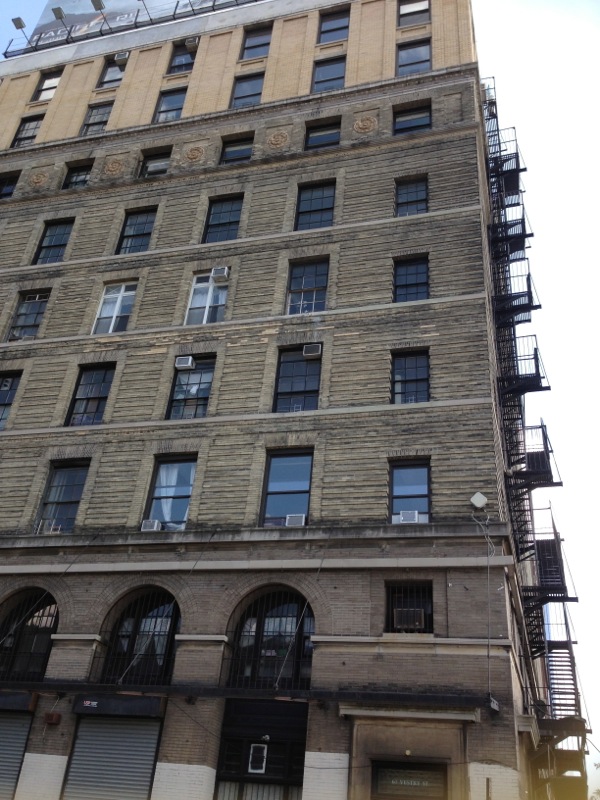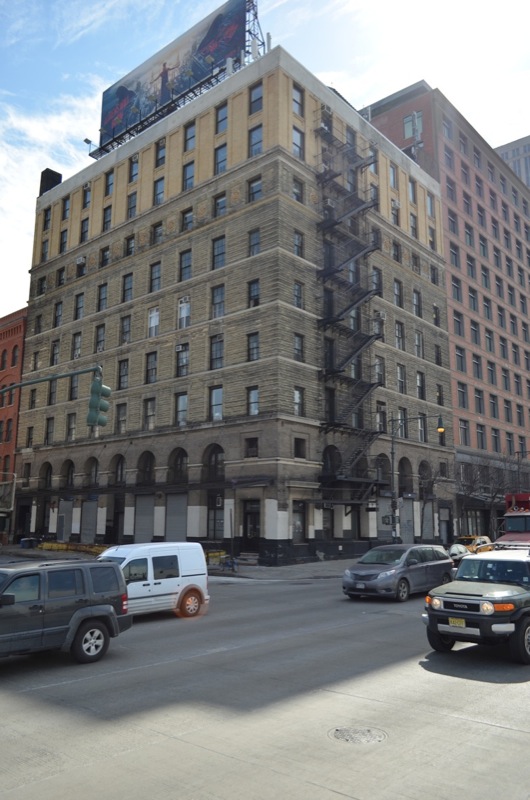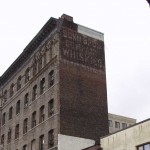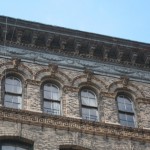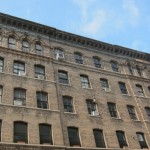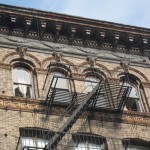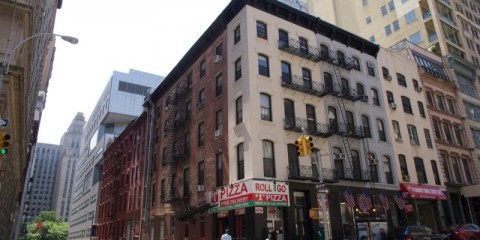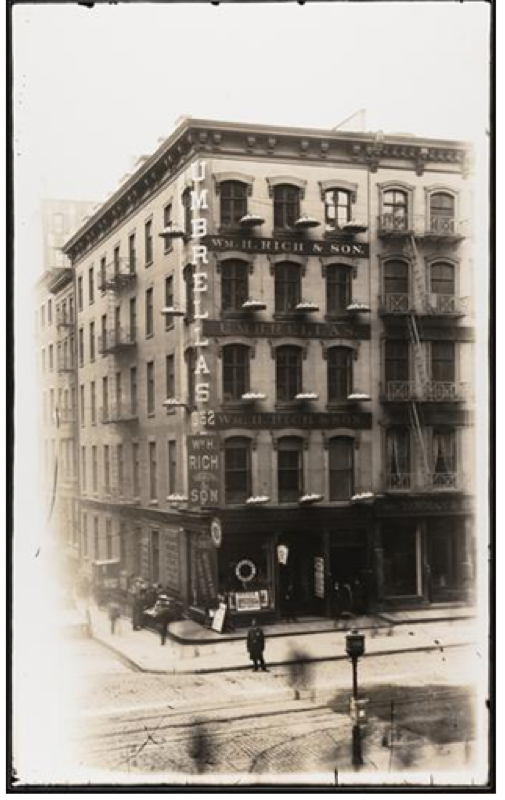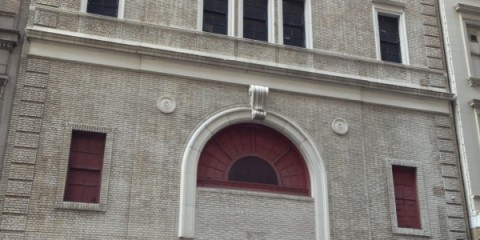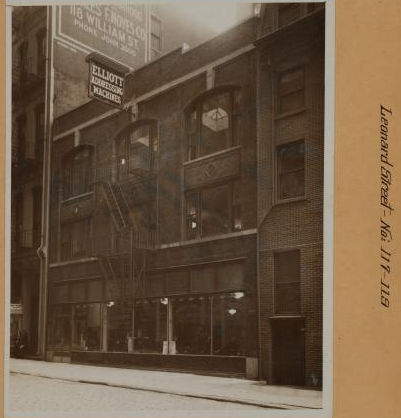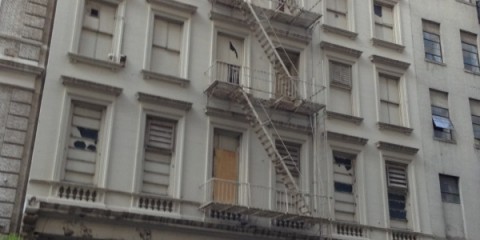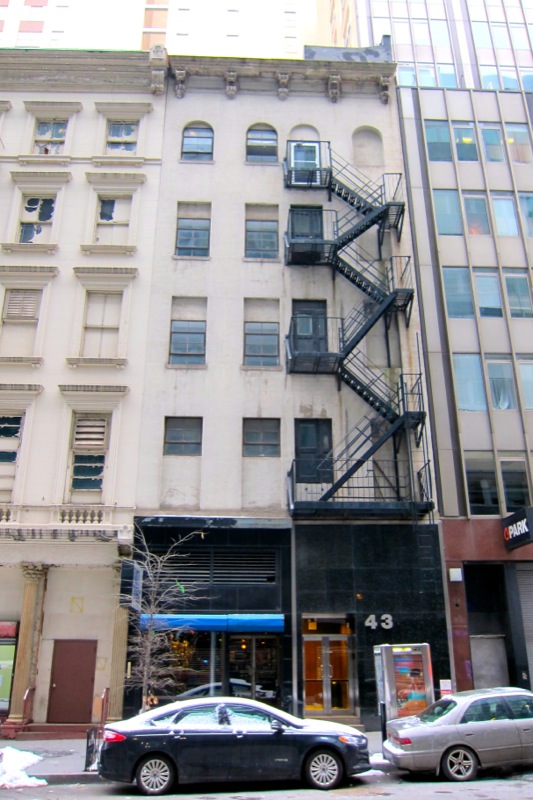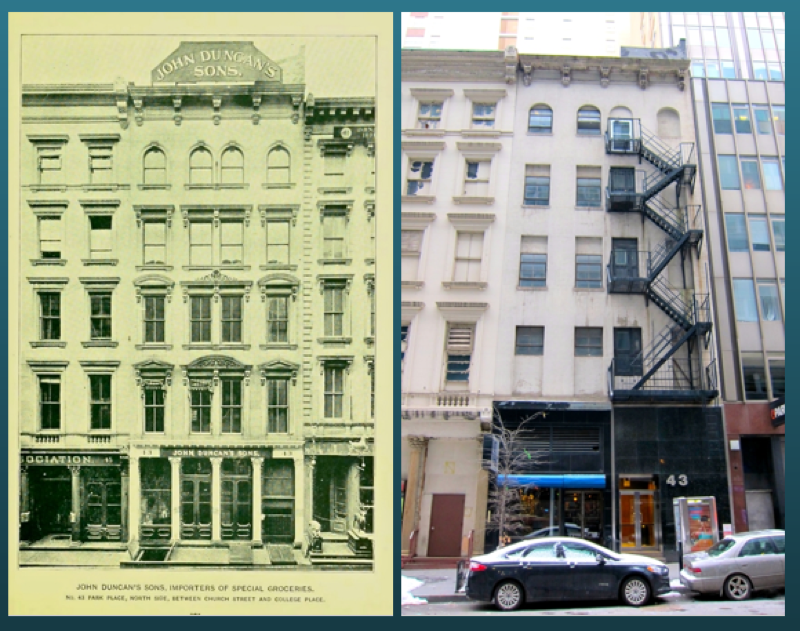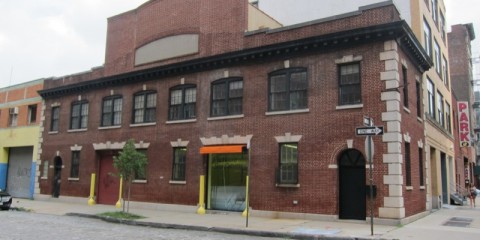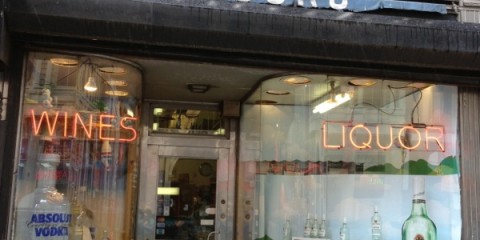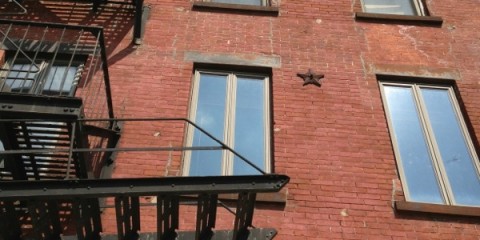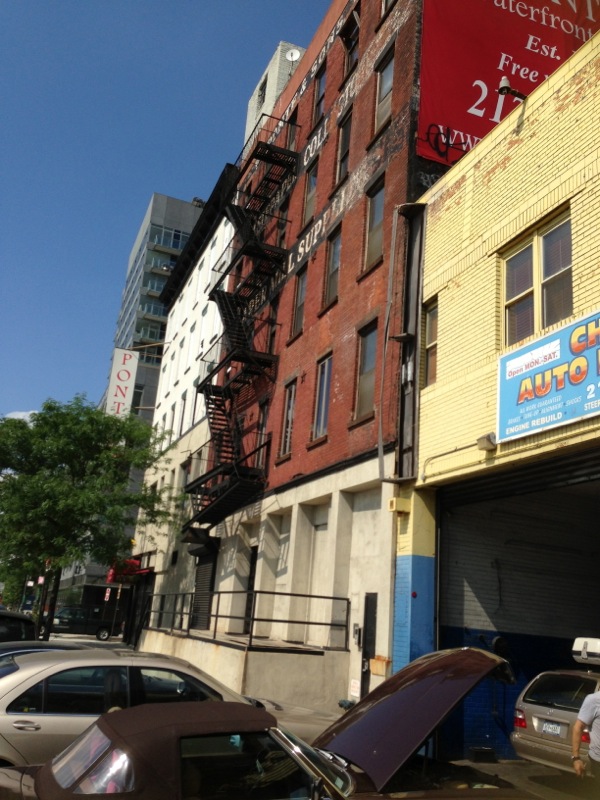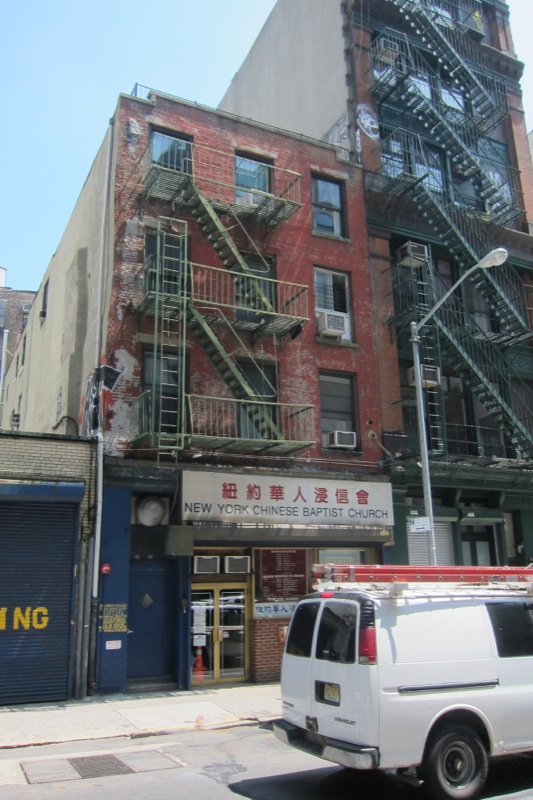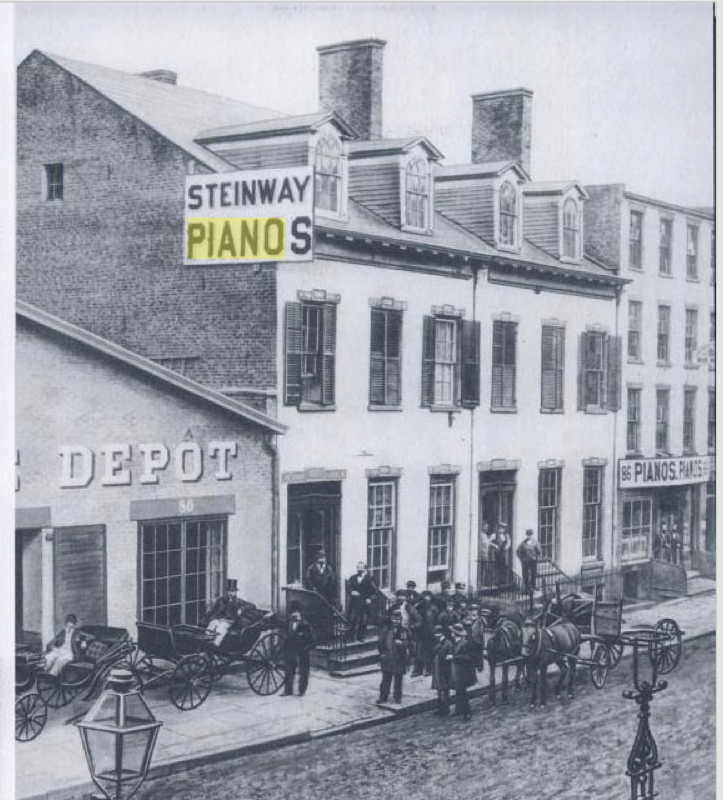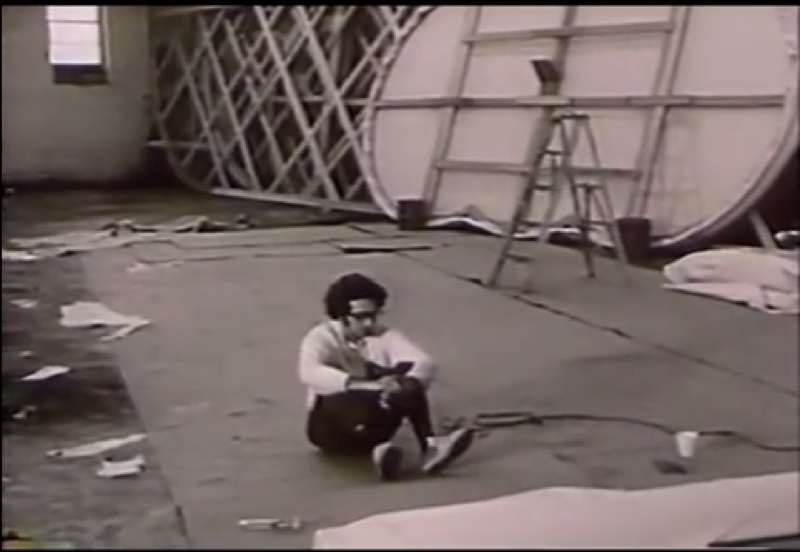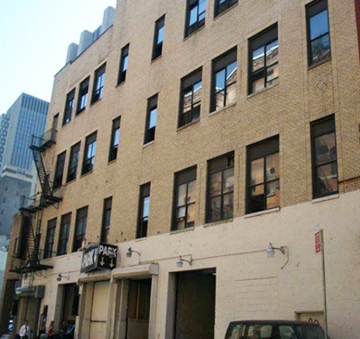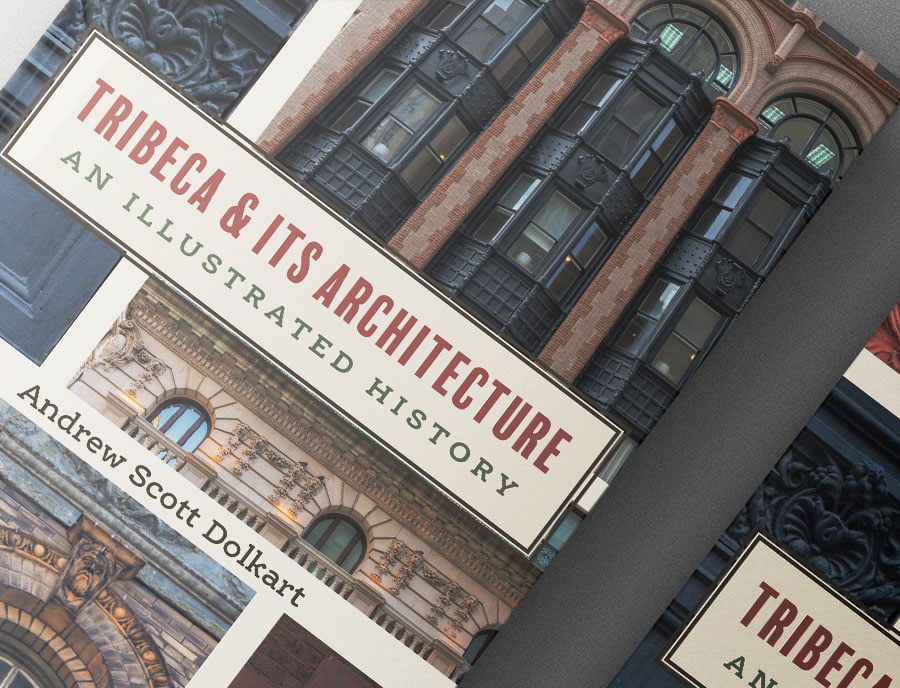1. 67 Vestry Street
The noble fortress shown below is the Great Atlantic and Pacific Tea Company’s warehouse in New York. It is not far from their now-demolishedheadquarters in Tribeca at 31 Vesey Street. It was built in 1897 by the same architect who did the Flatiron Building, Frederick Dinkelberg. Frank Helmle, also a noted architect, designed the two-story addition in 1910. The owner striped the the cornice away in the 1980s. Over 1500 people signed a petition begging the Landmarks Preservation Commission to save the building. Community Board #1 issued a resolution last week asking the same.
The building was left out of Tribeca North Historic District back in 1992. That was a sad decision. It is the last visual remnant of the Great Atlantic and Pacific Tea Company, aka., the”A&P.” Aby Rosen is the current owner. He wants to tear it down rather than restore it. Tribeca Trust submitted history of the building to the Landmarks Prseservation Commission, asking them to consider it for individual landmark status. The Landmarks Preservation Commission said they would not do so because the building lacks “architectural integrity.”
Why Doesn’t LPC Like This Building?
Maybe they don’t like the 1910 addition by Helmle. That would be highly personal aesthetic decision on their part. Or, maybe LPC doesn’t like the fact that the cornice is missing. But if the two-story 1910 addition is the irritant, it means LPC want protected buildings to reflect the intent of a single moment and a single architect, a standard that would rule out 90% of the world’s medieval cities. Such a standard would also rule out monuments like the Cathedral of Notre Dame in Paris which was restored by the non-original architect, Violet-le-Duc. If it is the missing cornice that bothers them, it means they object to buildings that needs restoration. Replacing the cornice is a minor job. Even more troubling, it also means that the history embodied here is irrelevant.
The upshot is that our current LPC would rather see this building torn down and a glass curtain wall tower put into its place. A good question then is this: would that result in “architectural integrity”?
Elected Officials are Trying to Help
Our elected officials are willing to help us in urging Landmarks to rethink the status of this building. Including this block in the Tribeca North Historic District would solve much of the problem. It would save the building, and help keep Tribeca whole.
2. 31 Desbrosses, also known as 438-440 Washington Street
The architecdtural firm of Kurtzer and Rohl built this handsome brick, stone, and terra-cotta warehouse in 1899 for Sylvester Mitchell. Kurtzer and Rohl have many buildings inside other historic districts. Sonn Brothers Whiskies quickly occupied the upper floors as storage. The ghost of the Sonn’s advertising can still be seen if you walk along the west side of the building. The terra-cotta sailor keystones over the upper floor windows were made in Staten Island by the Atlantic Terra Cotta Company. At Tribeca Trust, we cannot think of good reasons for this building not to be in the historic district of Tribeca North. Ponte Equities owns the building at present. They are notorious in Tribeca for their “demolition by neglect” style of management: remember that at least two federal townhouses in Tribeca owned by Ponte fell down this way. This particular building was damaged in Hurricane Sandy and according to a NY Times article, Ponte won’t undertake the repairs, although the tenants think the repairs are not so difficult. This stretch of Tribeca is really in trouble. Hasn’t Ponte Equities damaged Tribeca’s historic sense of place already through the out-of-context Truffles development? Why make matters worse by destroying this great building at 31 Desbrosses? Click on the images to see a bigger size.
- whiskey image form 1910
- more detail, 31 desbrosses
- 31 Desbroses
- details from Atlantic Terra Cotta
3 & 4. 360 Broadway/57 Franklin Ensemble
These buildings date from the 1840s. Research points to the corner building as the fifth floor workshop of the historian Ezekiel Porter Belden. Belden’s immense carved, wooden panorama of New York City created an architectural sensation at the time and has been written about by both Robert Stern and Rem Koolhaus as well as countless actual academic historians. According to one of his biographers, the young poet Walt Whitman visited Porter’s workshop and was inspired by the sight to use his talents to become the poet of the “panorama” of New York.
5. The Merck-Associated Press-Burlington Building
This lovely palazzo on the north side of Park Place off West Broadway was built in 1857 as an office building, over the site of the former Columbia University. It housed the New York headquarters of the Associated Press from 1893-1910 and eventually also housed Merck Pharmaceuticals, long before it became a corporate titan. It later housed the Burlington Coat Factory, during which time the facade was tinkered with in a bad way. We have a fuzzy photo of what the doorway looked like before the tinkering. It looks like a relatively easy restoration job. The present owner-developer wants to tear it down and build a skyscraper. The ground floor currently houses a mosque. Previous Landmarks Commissions were willing to calendar it as an individual landmark, but not the current Chair or current commission members.
6. The John Duncan & Sons Store on Park Place
Next door to the Burlington Coat Factory-Merck Building is the stripped facade of the once lovely John Duncan and Sons Store on the far right of the photo below. Duncan’s was the Zabar’s of its day. Looking at the photos below, it seems that restoration would not be difficult. Certainly a restored Duncan’s would be better than the proposed skyscraper.
7. The Carriage House, NW Corner Washington and Vestry
This charming carriage house is a target for Related Properties, well-known for destroying historic buildings throughout the city. Related is trying to accumulate all the rights on that block to build skyscrapers. Perhaps with the new deal to transfer air rights from Hudson River Park piers, they might try to buy air rights so as to build even higher? If that is so, bad news for Tribeca. This block needs to be brought into Tribeca North Historic District so that when development does happen, it happens in a regulated way that maximizes the possibility of contextual development taking place rather than another Truffles.
8. The Liquor Store
This tiny building has been around since Prohibition. Nobody would object if additions were added to make it taller, but does it have to be torn down? The charming curved glass display windows are extremely rare in New York now. If this building were part of the historic district, they could build higher but preserve the windows and one-of-a-kind signage.
9. 268 West Street (not, 288 West)
The infamous property owner known as Ponte Equities (same family indicted for mob-related issues in garbage hauling and known for demolition by neglect management of other federal-era townhomes) owns 268 West Street and the adjoining building housing Ponte’s restaurant. Ponte Equities stoutly resisted placement of their buildings into the Tribeca North Historic District in 1992 (although the buildings so obviously merited inclusion). Ponte did not want to make money by converting the buildings and renovating them. Instead, they waited and waited to to sell out a bigger real estate developer who would tear it all down and put in skyscrapers and glass curtains walls. Ponte has now realized their dream, thus destroying what is left of Tribeca North. Ponte already sold out the Truffles site. A book needs to be written on this tragedy, in which individual property owners were allowed to destroy a vast amount of New York’s historical patrimony around Washington Market. Related Properties has bought several properties on this block will tear it all down, ending and destroying all that is left of the great Washington Market along the river. Isn’t this the kind of tragedy that requires mayoral intervention? Advice welcome on this one.
10. 84 Walker Street
This is one of the oldest houses in lower Manhattan, built in 1834. It is dilapidated, but could easily be restored. It was built by Peter Jay, son of the founding father John Jay. The site was farmland before that. It was eventually rented out to Steinway Piano Company in 1854 (see photo, building is on far right). The artist Frank Stella used it as a studio in the 1960s. There is a photo of him in the building at the bottom of this entry. The building is owned by the Chinese Baptist Church, who also owns the neighboring lot. Permits for development have been filed in recent years, although no obvious action taken. It would be wonderful to work with the church to take a restorative approach to the two sites they own.
11. Honorable Mention, Parking Garage 24 Leonard Street
Left out of the historic district, this simple garage could easily be adaptively re-purposed. It has seen some window modifications over the years, but it does fit within the masonry aesthetic of Leonard Street. Such re-purposing has happened elsewhere with garages in the city to good effect. More likely, this garage will be torn down soon and replaced with something unregulated and out-of-context, making a mockery of the great cobblestone restoration job that recently took place on this street. Once again the solution is to expand the boundaries, in this case, of Tribeca East Historic District.

